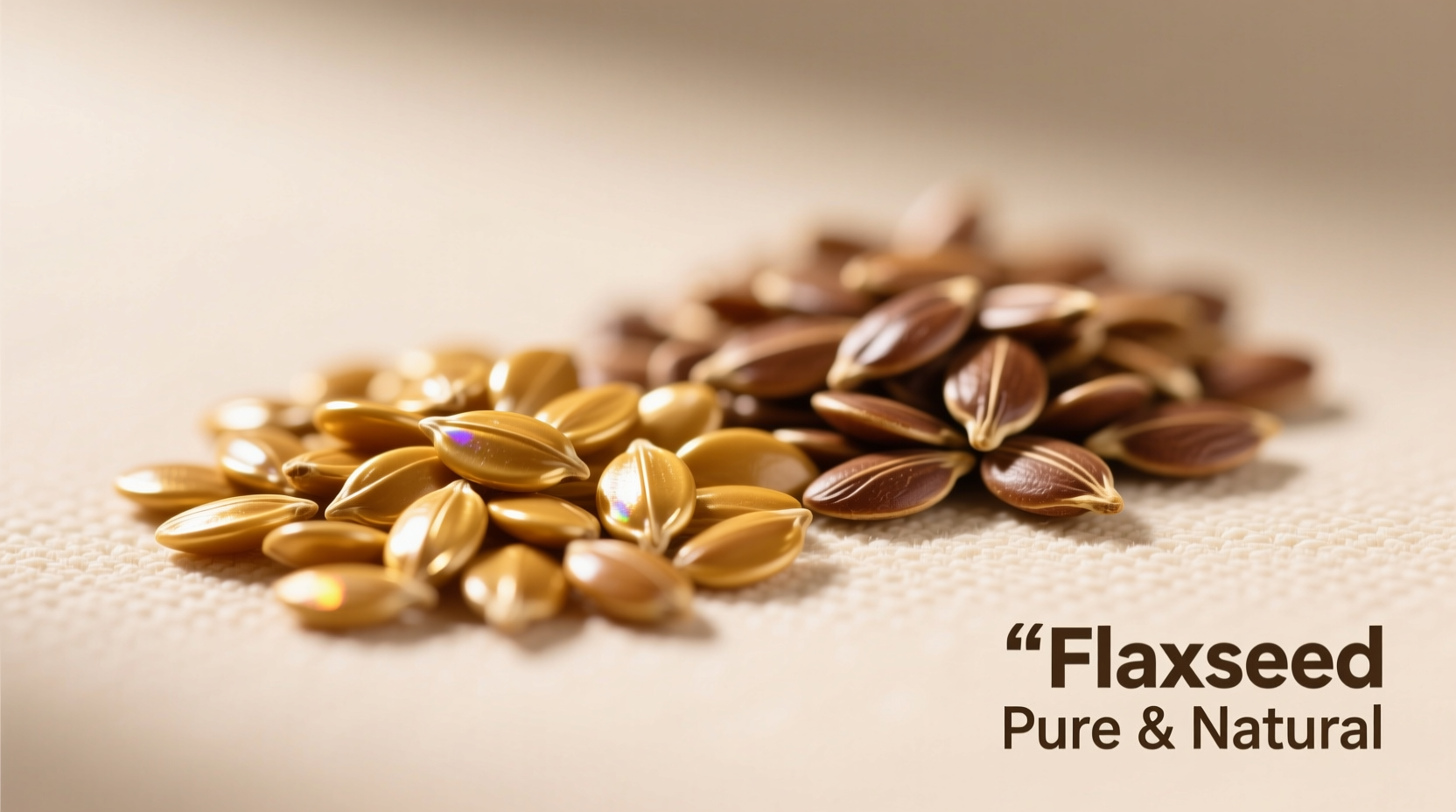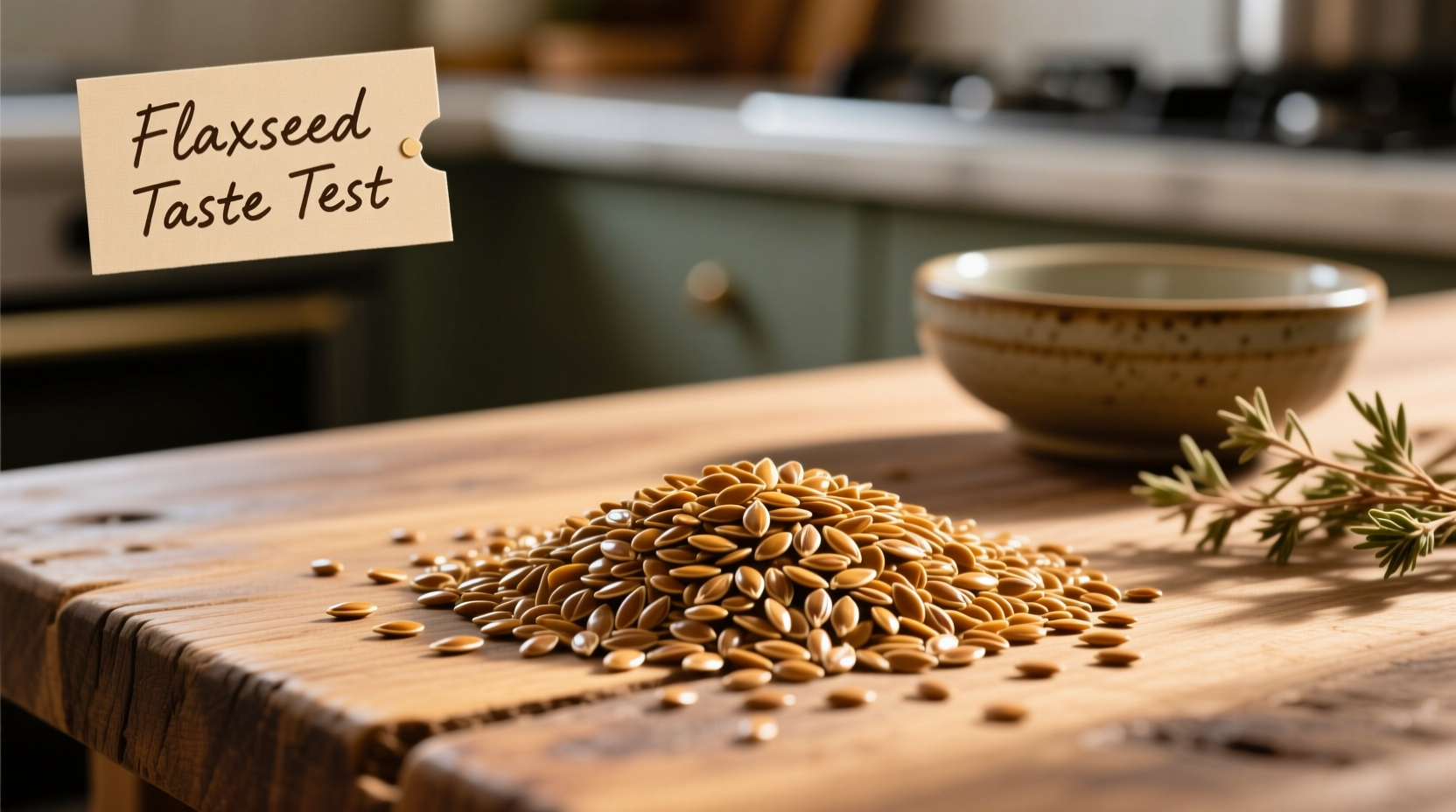Discover exactly how flaxseed tastes in different forms and learn practical ways to incorporate this nutritional powerhouse into your daily meals without compromising flavor. Whether you're new to plant-based nutrition or optimizing your diet, understanding flaxseed's sensory profile helps you use it effectively.
The Basic Flavor Profile of Flaxseed
Flaxseed delivers a distinctive yet subtle taste experience that surprises many first-time users. Unlike stronger seeds like chia or hemp, flaxseed offers a gentle flavor that blends well with other ingredients. The primary taste notes include:
- Nutty undertones – reminiscent of mild almonds or sunflower seeds
- Earthy base – similar to freshly turned soil after rain
- Subtle grassiness – more noticeable in raw whole seeds
- Hint of natural sweetness – particularly in golden varieties
This balanced profile makes flaxseed one of the most versatile functional foods available. According to research published in the Journal of Food Science, flaxseed contains over 30 volatile compounds that contribute to its complex flavor profile, with lignans and fatty acids playing significant roles in its characteristic taste.
Raw vs. Ground: How Preparation Changes Flavor
The form you choose dramatically impacts flaxseed's taste experience. Understanding these differences helps you select the right option for your culinary needs:
| Flaxseed Form | Taste Characteristics | Best Culinary Uses |
|---|---|---|
| Whole raw seeds | Mild, slightly grassy, barely noticeable | Salad toppings, bread coatings |
| Ground raw seeds | Noticeably nuttier, earthier, more robust | Smoothies, baked goods, oatmeal |
| Toasted seeds | Richer, deeper nuttiness, caramel notes | Salad dressings, grain bowls, roasted vegetables |
| Flaxseed oil | Clean, mild nuttiness, slightly bitter finish | Finishing oil, dressings (not for cooking) |
Food scientists at Cornell University's Department of Food Science note that grinding flaxseed increases surface area exposure to oxygen, which enhances flavor compound release. This explains why ground flaxseed tastes significantly more pronounced than whole seeds. For optimal flavor and nutrient retention, grind flaxseed immediately before use using a coffee grinder dedicated to seeds.
Golden vs. Brown Flaxseed: Flavor Comparison
While nutritionally similar, these two varieties offer subtle taste differences that affect culinary applications:
- Golden flaxseed – Features a slightly sweeter, milder profile with less pronounced earthiness. Its pale color makes it ideal for light-colored baked goods where visual appeal matters.
- Brown flaxseed – Offers a more robust, nuttier flavor with stronger earthy notes. Its darker color works well in whole grain breads and hearty recipes.
A sensory evaluation study conducted by the USDA Agricultural Research Service found that 68% of participants preferred golden flaxseed in sweet applications like muffins and smoothies due to its milder flavor, while brown flaxseed performed better in savory applications like crackers and breads.
Temperature's Impact on Flaxseed Flavor
How you apply heat significantly alters flaxseed's taste characteristics:
Cold Applications
When used raw in smoothies, yogurt, or cold cereals, flaxseed maintains its delicate nutty flavor. The cooler temperature preserves volatile compounds that might evaporate with heating. This is ideal when you want subtle flavor enhancement without overpowering other ingredients.
Baking Applications
During baking, flaxseed develops richer, toastier notes as Maillard reactions occur. The U.S. Food and Drug Administration notes that baking temperatures between 325°F and 375°F optimize flavor development without compromising nutritional value. Higher temperatures can create bitter notes, so moderation is key.
Toasting Techniques
Dry-toasting flaxseed in a skillet for 2-3 minutes dramatically enhances its natural nuttiness. Chef Antonio Rodriguez recommends this technique: "Heat a dry skillet over medium heat, add flaxseed in a single layer, and stir constantly until fragrant and slightly darker – about 90 seconds. Immediately transfer to a cool plate to stop cooking."

Strategic Pairing: Complementing Flaxseed's Flavor
Understanding flavor chemistry helps you create delicious combinations that showcase flaxseed's best qualities:
Natural Flavor Enhancers
Certain ingredients naturally complement flaxseed's profile:
- Vanilla – Masks any grassiness while enhancing natural sweetness
- Cinnamon – Complements earthy notes with warm spice
- Lemon zest – Brightens flavor profile with citrus notes
- Maple syrup – Balances earthiness with caramel sweetness
Texture Considerations
Flaxseed's texture significantly impacts perceived flavor. When properly incorporated into batters or doughs, its slight crunch disappears, leaving only flavor enhancement. In smoothies, blending with frozen fruit creates a creamy texture that masks any seediness.
Storage Impact on Flavor Quality
Improper storage quickly degrades flaxseed's flavor. The USDA National Agricultural Library recommends these storage guidelines:
- Whole seeds – Store in airtight container in cool, dark place for up to 1 year
- Ground seeds – Refrigerate in opaque container for 30-60 days or freeze for 6 months
- Flaxseed oil – Always refrigerated, use within 4-6 weeks of opening
Rancidity develops quickly in ground flaxseed due to its high omega-3 content. Trust your nose – fresh flaxseed should smell clean and nutty, not musty or paint-like. Proper storage preserves both nutritional value and optimal flavor.
Practical Application Guide
Use these chef-tested techniques to maximize flavor while incorporating flaxseed:
For Baking Success
Replace 1 egg with 1 tablespoon ground flaxseed mixed with 3 tablespoons water. Let sit for 5 minutes to form a gel. This works particularly well in:
- Muffins and quick breads (use golden flax for lighter color)
- Whole grain cookies (brown flax complements darker flours)
- Vegan brownies (enhances fudgy texture without altering chocolate flavor)
For Smoothie Integration
Add 1-2 tablespoons ground flaxseed to fruit-based smoothies. The natural sweetness of berries or bananas masks any earthiness while the fiber content creates a creamier texture. For green smoothies, pair with citrus to balance flavors.
For Savory Applications
Create a flavorful crust for fish or chicken by mixing ground flaxseed with herbs and spices. The nutty flavor complements roasted vegetables when sprinkled on top before serving. Flaxseed also works well in homemade veggie burgers, binding ingredients while adding nutritional value without overpowering other flavors.
Contextual Boundaries: When Flaxseed Flavor Works Best
Understanding where flaxseed shines—and where it might disappoint—helps you use it effectively:
- Ideal applications – Baked goods, smoothies, oatmeal, yogurt, veggie burgers
- Limited success – Delicate desserts like meringues or angel food cake
- Not recommended – As primary ingredient in dishes where seed flavor would dominate
Professional chefs note that flaxseed performs best when used at 10-15% of total dry ingredients in baking applications. Beyond this ratio, the earthy notes become more pronounced and may overwhelm other flavors.
Taste Evolution: Historical Flavor Preferences
Flaxseed's culinary journey reveals changing flavor perceptions:
- Ancient times – Primarily valued for fiber and binding properties, with taste being secondary
- Medieval Europe – Used in breads where strong flavors masked its earthiness
- 20th century – Limited culinary use due to poor storage techniques causing rancidity
- Modern era – Appreciation for subtle flavor in health-conscious cooking
Today's refrigeration and grinding technology allows us to enjoy flaxseed's optimal flavor profile—something previous generations couldn't reliably achieve. This evolution explains why modern recipes successfully incorporate flaxseed where historical attempts often failed.
Maximizing Flavor in Your Kitchen
Follow these practical tips for the best tasting results:
- Always grind flaxseed fresh for maximum flavor impact
- Toast seeds briefly to enhance nuttiness for savory applications
- Store ground flax in the freezer to preserve freshness
- Pair with complementary flavors like vanilla, citrus, or warm spices
- Start with small amounts (1-2 tablespoons) when experimenting
Remember that flaxseed's mild flavor makes it incredibly versatile. With proper handling and smart pairings, you can enjoy its nutritional benefits without compromising on taste. Whether you're baking, blending, or cooking, understanding flaxseed's flavor profile helps you create delicious, nutrient-dense meals that satisfy both your palate and your health goals.











 浙公网安备
33010002000092号
浙公网安备
33010002000092号 浙B2-20120091-4
浙B2-20120091-4